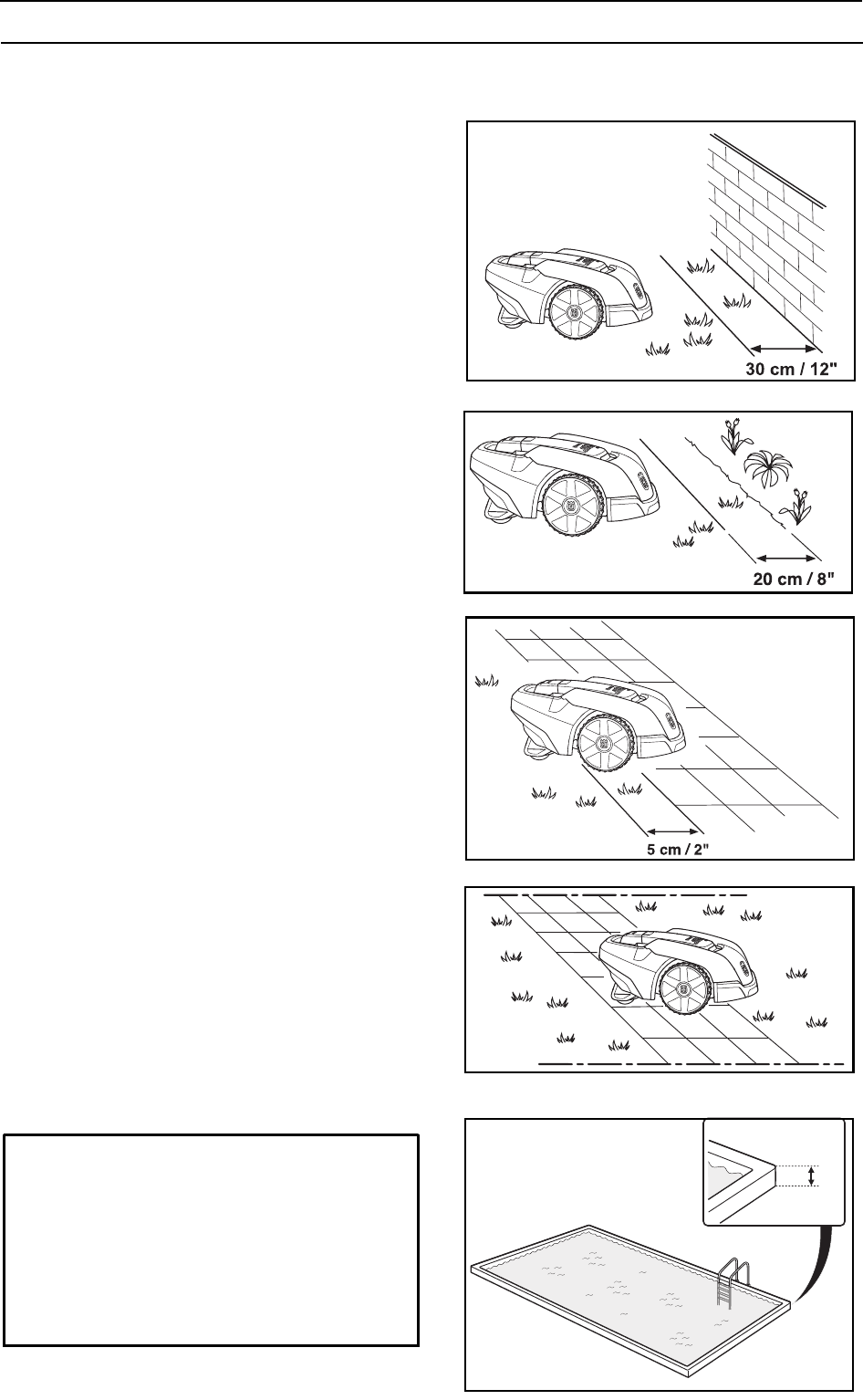
English - 23
3. INSTALLATION
Working area boundaries
If a high obstacle, for example a wall or fence,
borders the working area, the boundary wire should
be laid 30 cm from the obstacle. This will prevent the
robotic lawnmower from colliding with the obstacle
and reduce body wear.
About 20 cm around the fixed obstacle will not be
mown.
If the working area borders on a small ditch, for
example a flower bed or a small elevation, or a low
curbstone (3-5 cm), the boundary wire should be laid
20 cm inside the working area. This prevents the
wheels from driving into the ditch or up onto the
curbstone.
About 12 cm of grass along the ditch/curbstone will
not be mown.
If the working area borders on a paving stone path or
similar which is level with the lawn, it is possible to
allow the robotic lawnmower to run a little over the
path. The boundary wire should then be laid 5 cm
from the edge of the path.
All the grass along the side of the paving stone path
will be cut.
When the working area is divided by a paving stone
path which is level with the lawn, it is possible to allow
the robotic lawnmower to run over the path. It can be
an advantage to lay the boundary wire under the
paving stones. The boundary wire can also be laid in
the joint between the paving stones.
Note: The robotic lawnmower must never run over
gravel, mulch or similar material which can damage
the blades.
IMPORTANT INFORMATION
If the working area is adjacent to water
bodies, slopes, precipices or a public road,
the boundary wire must be supplemented
with an edging or the like. It must then be at
least 15 cm in height. This will prevent the
robotic lawnmower from ending up outside
the working area under any circumstances.
3012-940
3012-941
3012-942
Min.
15cm
3012-943
3018-046


















